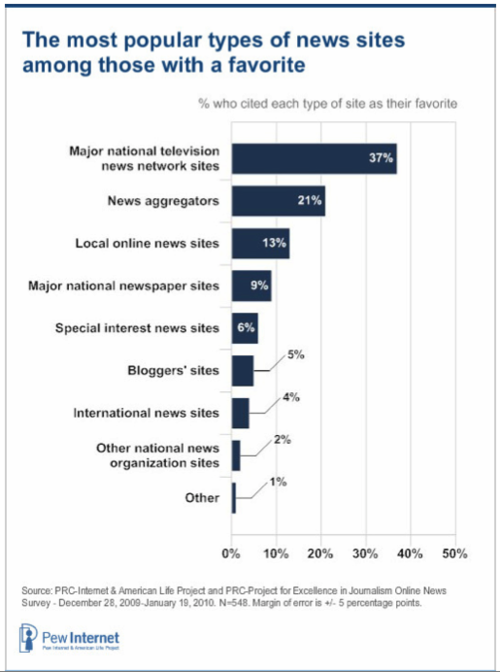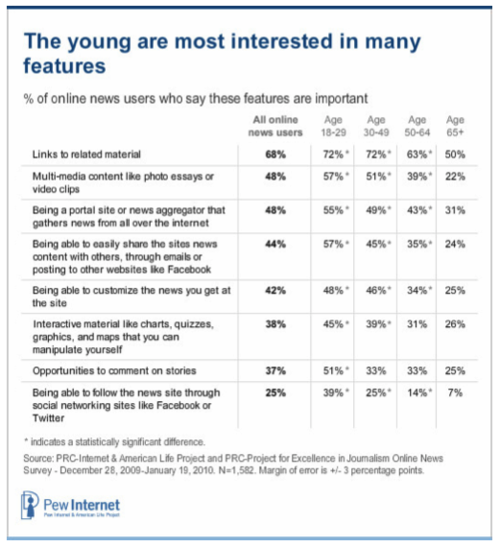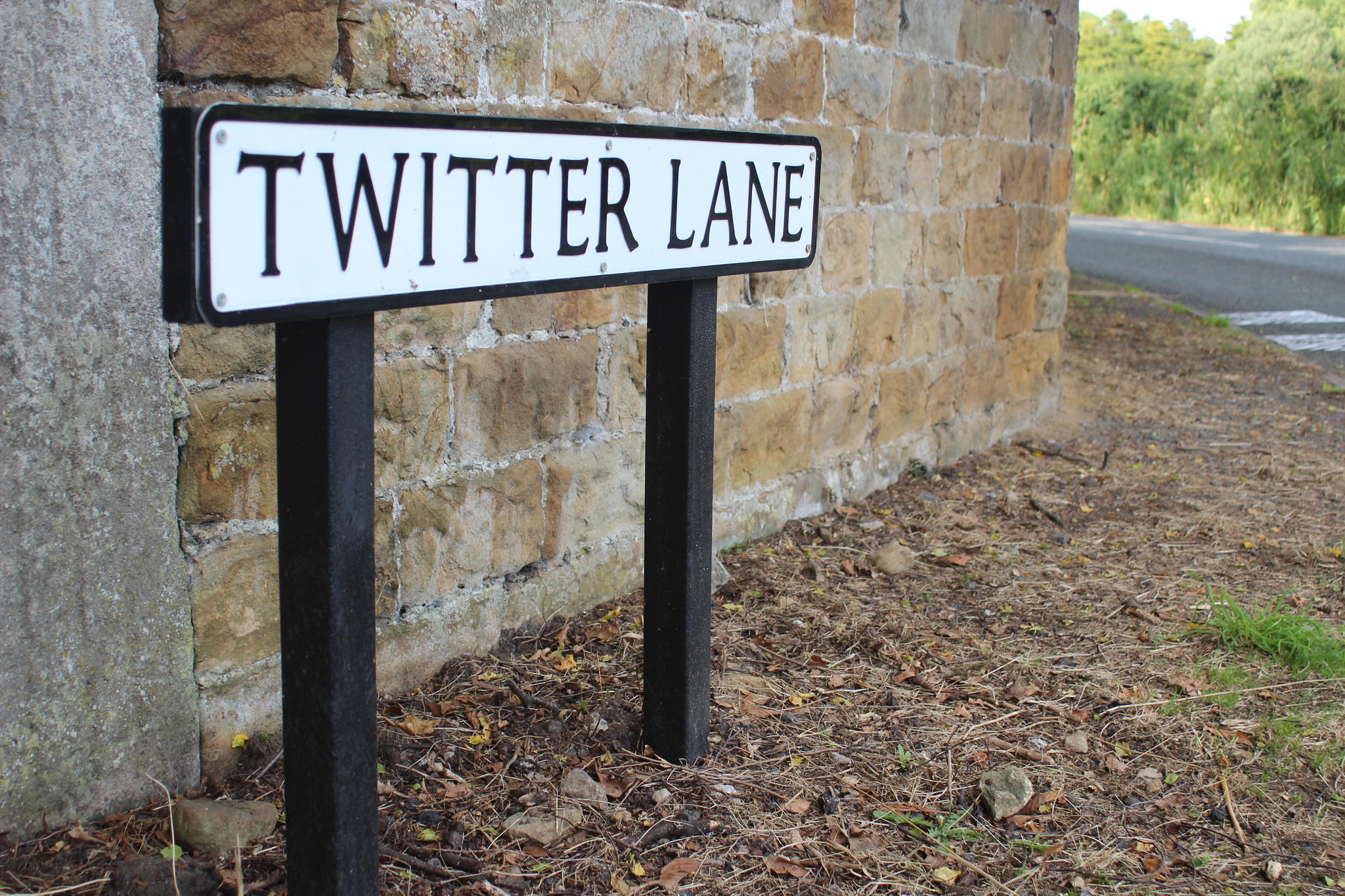News has gone social, claims Pew Internet. LOL, tell me something I don’t know. 🙂 Pew’s report, “Understanding the Participatory News Consumer,” is an informational treasure trove for journalists or would-be journalist bloggers. But it would be much better had Pew surveyed Americans under 18. Instead, the organization surveyed 2,259 US adults, ages 18 or older, between Dec. 28, 2009 and Jan. 19, 2010. Crucial demographic “Internet users” is 1,675. Why did Pew ignore the most important socially active demographic group? Teenagers?
The report officially released today, but I downloaded it last night. Seventy-one percent of adult Americans get news online, which Pew says works out to 94 percent of US Internet users. Whoa. What’s more interesting is how they get their news. Among this group:
- 75 percent (or 71 percent of Internet users) get news from email or from social networking posts.
- 38 percent of this group of receivers “read the material all or most of the time”; 37 percent some of the time.
- 50 percent of users getting news online (that’s 48 percent of all Internet users) “pass along email links to news stories or videos to others.”
Pew looks at what social news means to journalists, not just news organizations:
A notable number of internet users are beginning to treat news organizations, particular journalists, and other news mavens as nodes in their social networks. In this survey we found that 57 percent of online Americans use social networking sites such as Facebook, MySpace orLinkedIn—and 97 percent of them are online news consumers. Some 51 percent of the social networking users who are in the online-news population say that on a typical day they get news from people they follow on sites like Facebook. That amounts to 28 percent of all internet users who get news via social networking with friends.
In addition, 23 percent of the social networking users who get news online say they specifically get news from news organizations and individual journalists they follow in the social networking space. In other words, they have friended or become a fan of a journalist or news organization and they catch up on news through this relatively new channel of news. That amounts to 13 percent of all internet users. Overall, 30 percent of internet users get news from friends, journalists or news organizations they follow on social networking sites on a typical day.
The data has potentially interesting negative implications for blogs or news sites focused on Search Engine Optimization, which I usually refer to as Search Engine Obsession. Pew’s findings suggest more Internet users are following individual journalists or news sites exploiting social sharing tools. Personality may matter more for differentiating from the online news source mob than SEO. Still, among those Internet users with a “favorite” news site, only 5 percent named blogs. The majority (37 percent) cited major TV news network sites, followed by news aggregators (21 percent).

Social sharing is crucial regardless. Nineteen percent of US Internet users use Twitter or other status update services. Pew also found that 99 percent of Twitter users fit in the “online news consumers” classification. More from Pew: “Twenty-eight percent of those who are in the online news consumer cohort say they get Twitter updates about news from friends and colleagues they follow on Twitter and 18 percent follow the Twitter feeds of news organizations or individual journalists. Combined, that amounts to 6 percent of all internet users who get news via Twitter feeds.”
That number doesn’t seem like much, but how hard is it to write a 140-character Tweet? I signed up for Twitter on Dec. 26, 2006 and used it little until mid 2008, when I started massing followers. Twitter is a tool no journalist can ignore.
The same can be said of Facebook and other social services. Pew analysts Kristen Purcell, Lee Rainie, Amy Mitchell, Tom Rosenstiel, Kenny Olmstead explain:
A significant portion of online news consumers judge news organization Websites by the degree to which they facilitate the social sharing of news. Some 44 percent of these online news consumers say that one of the factors they use in choosing where to get news online is whether it is easy to share the site’s content with others through emails or postings on social networking sites. A quarter of these online news consumers (25 percent) say an important factor for them is being able to follow the news organization through social networking sites like Facebook or Twitter.
Ouch, does that hurt! I need to make social sharing a higher priority at this blog.

I’ve summarized but just a few pages from the 51-page Pew report. It’s a must-read for any journalist looking to survive dramatic social media changes. They’re still relatively new. YouTube officially opened in November 2005. Facebook opened to the public in 2006 and Twitter a few months later. Most of the most popular or growing popular tools for community and self expression launched within the last three years:Disqus, FriendFeed, tumblr, Twine, Qik and USTREAM, among many others. Apple’s iPhone released in June 2007—yet another social sharing tool now taken for granted (along with a slew of new smartphones).
New social sharing services seemingly appear every day. Google Buzz and Chatroulette are among the most recent. The message from these social sharing changes in context of the Pew report is clear: Journalists must either adapt or die.
Photo Credit: Duncan Hull
